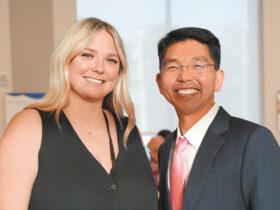By Jacob Ober, PT, DPT, ATC
 The field of regenerative medicine is ever-changing based on new scientific developments. At Performance Optimal Health, our regenerative medicine team is dedicated to being an extension of the expert care healthcare practitioners provide. Successful patient care is rooted in a team that is dedicated to collaboration to create and consistently update best-in-class physical therapy protocols based on the most advanced evidence and progressions in the field. The best treatment approach includes targeted exercise strategies for the specific area treated and addressing movement and muscle performance deficiencies at adjacent joints. In addition, utilizing advanced technologies such as blood flow-restricted therapy (BFR) also enhances treatment outcomes. Below, we dive into some of the key aspects of regenerative medicine, breaking it down as well as discussing a key modality and treatment outline for one of the most common degenerative diseases.
The field of regenerative medicine is ever-changing based on new scientific developments. At Performance Optimal Health, our regenerative medicine team is dedicated to being an extension of the expert care healthcare practitioners provide. Successful patient care is rooted in a team that is dedicated to collaboration to create and consistently update best-in-class physical therapy protocols based on the most advanced evidence and progressions in the field. The best treatment approach includes targeted exercise strategies for the specific area treated and addressing movement and muscle performance deficiencies at adjacent joints. In addition, utilizing advanced technologies such as blood flow-restricted therapy (BFR) also enhances treatment outcomes. Below, we dive into some of the key aspects of regenerative medicine, breaking it down as well as discussing a key modality and treatment outline for one of the most common degenerative diseases.
Regenerative Medicine:
• Regenerative medicine is an umbrella term for a branch of medicine that uses stem cells and tissue engineering to “fix” tissues that have failed to repair themselves.
• These innovative outpatient procedures are minimally invasive, ultrasound-guided, and use local (not general) anesthesia. They are used for a variety of sports injuries and musculoskeletal conditions.
• Regenerative medicine promotes regeneration and joint restoration using blood-based procedures such as platelet-rich plasma, stem cells, and cell-based or tissue engineering.
• Platelet-rich plasma (PRP) – Using your own blood, your own platelets are isolated and concentrated and then injected back into the injured area.
• Stem Cell Injections – Bone marrow is drawn from your pelvic bone, concentrated to remove the unwanted portions, and inject it back into the injured area.
• There is a growing importance for its uses in the non-operative management of various pathologies, including knee osteoarthritis, rotator cuff tears, and various muscle and tendon injuries. Common areas treated with regenerative medicine include the hamstring muscle/tendon, Achilles tendon, patellar tendon, and the tendons of the elbow linked to golfer’s and tennis elbow.
Knee Osteoarthritis
Knee osteoarthritis is one of the most common degenerative diseases in the knee and can affect any synovial fluid in the body. KOA is the leading cause of disability claims and affects the quality of life of millions of people. It accounts for 80% of the global burden of diseases and affects 10% of men and 16% of women aged 60 years and older. Arthritis in the knee joint is mostly related to being overweight and has increasing prevalence with age and weight. A BMI rise is a known risk factor for KOA, potentially due to joint overloading and adiposity-induced inflammation.
Methods of Treatment:
Weight Loss & Strength Training:
• Moderate physical exercise is associated with a decreased risk of severe KOA.
• A change of 1% in body weight has been shown to have a significant association with slower loss of tibial cartilage volume and improvement in symptoms, suggesting a meaningful impact on cartilage health.
• Incorporation of an inflammation-conscious diet and interventions is critical to reducing BMI.
• Exercises should be designed to progress from single-joint to multi-jointed kinetic chain exercises focusing on motions to address the core, hip, knee, and ankle.
• Cardiorespiratory training is recommended to maintain and improve aerobic capacity in conjunction with neuromuscular training to maintain overall muscle strength, flexibility, and proprioception.
Blood Flow Restriction:
• Blood Flow Restriction training (BFR) is a rapidly growing intervention for patients suffering from muscle atrophy, weakness, neuromuscular control deficits, pain, and traumatic injuries where sufficient loads are required for muscle strengthening and hypertrophy cannot be tolerated.
• BFR can improve pain while inducing less joint stress, emerging as a feasible and effective therapeutic treatment in OA symptom management.
• Research supports using BFR to increase muscle hypertrophy, increase strength, improve serum growth hormone, and muscle endurance, increase peripheral stem cell count and increase protein synthesis by using less than recommended weight training intensities for those gains.
At Performance Optimal Health, we use comprehensive research and the latest technology to incorporate the four pillars of optimal health (exercise, recovery, nutrition, stress management) into your care. Each pillar plays a significant role in your optimal health journey, and using tools and services from each of the pillars can greatly enhance and expedite your path to success.
Jacob Ober, PT, DPT, ATC, is a physical therapist, dry needling specialist and certified athletic trainer based in Central Naples who subspecializes in working with athletes.
Performance Optimal Health
2260 Logan Blvd., N, Suite 302, Naples, FL 34119
6425 Naples Blvd., Naples, FL 34109
239.342.1342
PerformanceOptimalHealth.com







